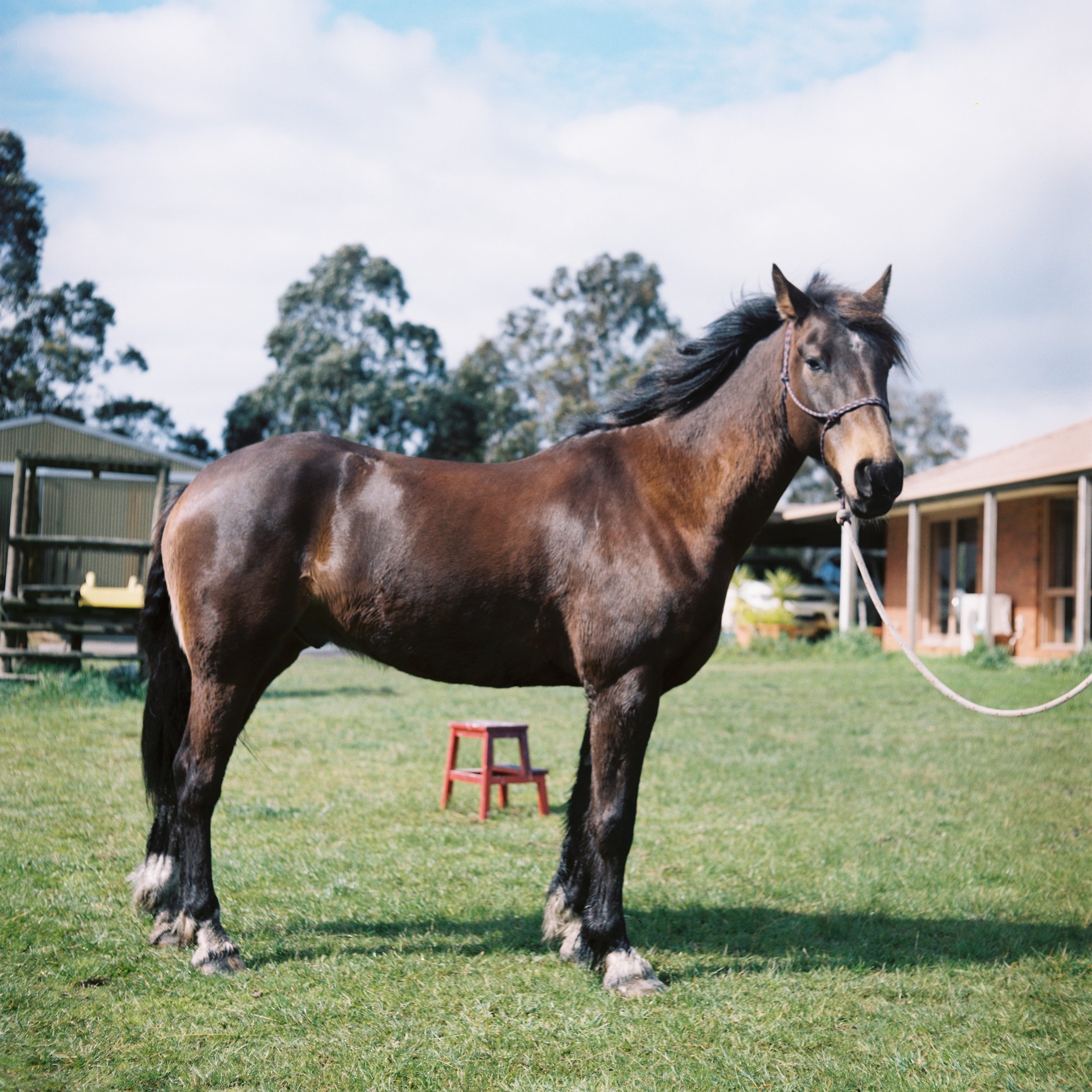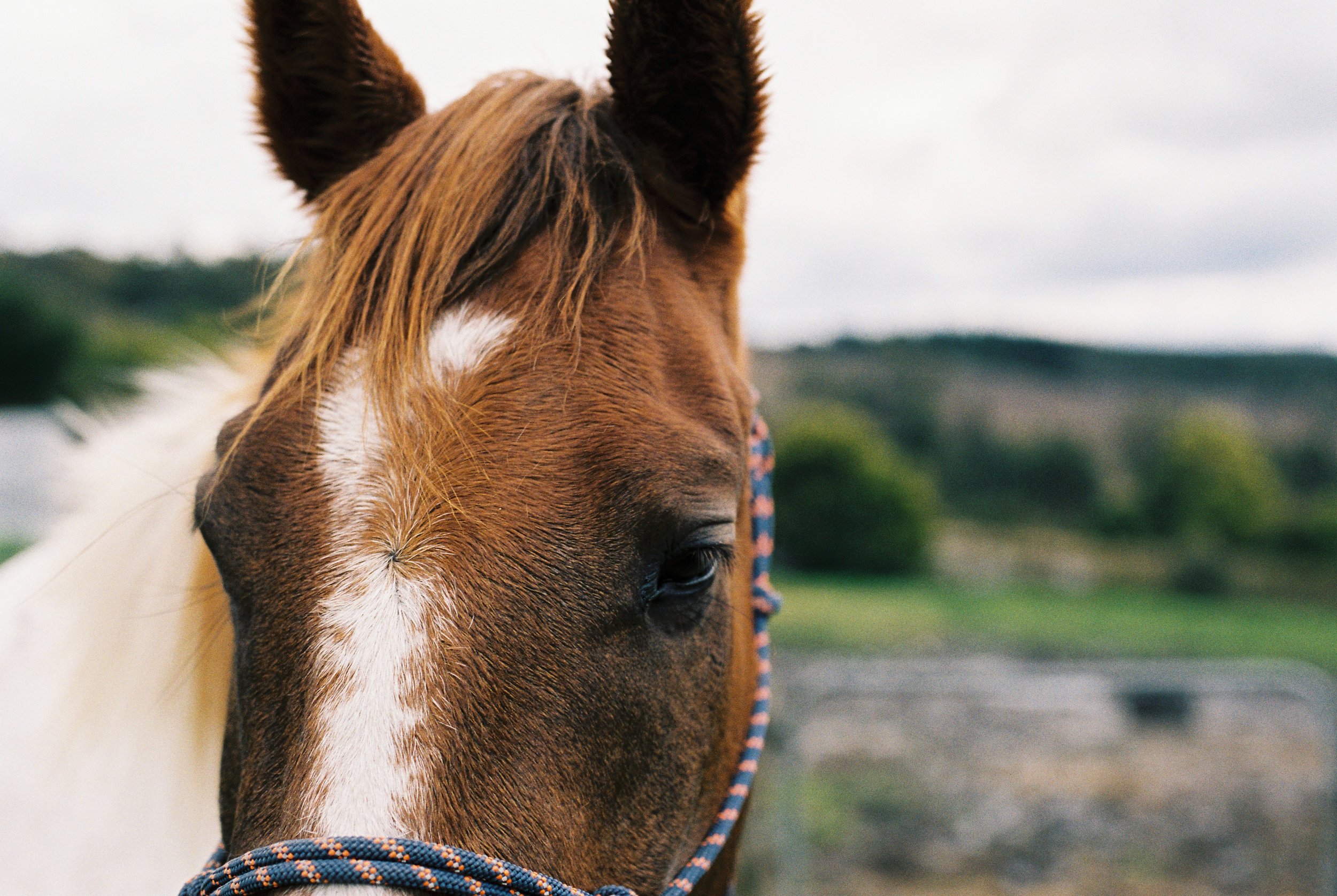So it all started with a podcast back in haze of 2015. I was listening to a podcast narrated by Richard Fidler, an Australian Broadcaster, who was speaking with a woman who had a peculiar breed of horse. This breed was known as Waler. It really got me thinking at the time about how much I would love to own one of these horses. I’ll provide more information about why shortly!
However, I soon realised that living in the suburbs meant that owning a horse was impossible. But I couldn’t shake my desire to learn more about these horses, so it got me thinking about how I could learn more about them. Then it hit me – film photography! I had been searching for a project for months and at that moment it clicked. I would combine my love of film photography with my new found passion for Waler horses. So I contacted the Waler Horse Society of Australia and was put in touch with Jason, who is now President of the Waler Horse Society of Australia. We exchanged details and I planned to venture out earlier this year, but as many of you know life gets in the way and things get pushed back. So it wasn’t until late August that I made my way out to Jason’s property to photograph the horses. The weather wasn’t the best, but I made do and still managed to churn through 7 rolls of film!
Now that you have my little prelude of how it all came to be it is time I told you more about these fantastic horses. Personally, I have not had much experience with horses at all, but what stood out for me regarding this breed was their rich history. They were originally brought over as part of the first fleet to Australia by boat, so many of the horses that arrived alive were going to be tough. Unfortunately, conditions in Australia were no better and it was essential that they could carry heavy loads and survive on the tough terrain. Therefore, those that survived were bred intensely and continued to flourish and were ultimately named Waler. The Australians used them in World War I where they developed a name for themselves for their endurance and courage. Unfortunately, with the technological advancements of the 1940’s the breed started to decline, with many roaming station properties in rural and remote Australia.
Since then some Australians are now taking them off the stations and keeping the breed alive. Jason, along with others, are doing this and what I found most interesting was how many horses he has captured on the stations that have had no human contact, yet are so comfortable around humans. He showed me a few horses that he has only had for around 3-4 months, which were previously roaming the wild, but were now so friendly. This is no doubt a testament to the breed!
Since visiting Jason I have decided to begin working on a more extensive project documenting the Walers all around Australia and set up an exhibit in the near future. I hope to capture the relationships that people have with the Walers and explore their history in more detail. I am part of the Fox Darkroom in Victoria so I am hoping to print my black and white images for the exhibit as well. Specifically, I’m hoping to go out to Central Australia and see them roaming around the stations so I can get a better sense of the wild terrain that the horses traverse.
In regards to the film photography aspect, I had very little knowledge on how to photograph horses, but I did manage to consult a few friends. They informed me that fast film was going to be my best friend! So I went out to Jason’s property with Kodak Portra 400 and Tri-X 400 to load into a Mamiya C220 with an 80mm f2.8 lens and the Nikon FM2 coupled with a 50mm f1.8 lens. I shot both films at box speed, but given the day was a bit overcast to begin with I reckon I could have started off with pushing Tri-X 400 to 800. Fortunately, if you develop it in ID-11 or XTOL you’ll see that development times are the same at both speeds, so you have a multiple ASA film to test the limits! This definitely helped as the Mamiya does not have a light meter, and I was relying solely on the light meter in my phone. It did work, but obviously there is also limited overexposure tolerance for black and white film when compared to colour film. Therefore, I found shooting colour at wide apertures to be particularly rewarding on the day as there were times where I was overexposing the film by 4 or 5 stops, but not needing to worry.
Another thing to consider is the speed at which horses move, which means you need a relatively fast shutter speed hence the need for fast film. I found shooting at between 1/250 and 1/500 of a second ideal, but there were times where I shot at 1/60 and the images were not as sharp. Obviously if you have good weather with full sun it is unlikely you will drop below 1/250 with a 400 speed film, but you need to be prepared for overcast days like the one I experienced.
Looking to the future I really need a 35mm lens to ensure that I can get better shots of the horses' faces, as 50mm can be a tight close up. However, both cameras performed really well and the built in meter on the Nikon enabled me to shoot wide open and focus quite quickly given its split prism focus design. Finally, when photographing horses make sure you have their ears pointed upwards. It seems to be a rule amongst horse photographers, and when you see the images with their ears pointed it just gives it that little extra magic.
If you have any more questions or queries about the Waler horses or what I did with my gear on the day please reach out to me at unsavouryandgrouse@gmail.com, @unsavouryandgrouse on Instagram and @unsavourygrouse on Twitter.
Connect
If you have any more questions or queries about the Waler horses or the gear discussed in this article, you can contact film photographer Nik Partsanis at unsavouryandgrouse@gmail.com. See more of his work and connect with him on Instagram and on Twitter.








